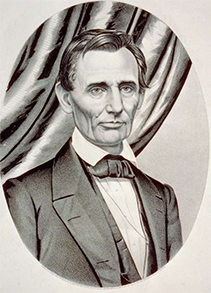Activity 4: The Political Spectrum from Far Left to Far Right
| The Political Spectrum from Far Left to Far Right |
 |
| Totalitarian and authoritarian governments tend to cluster closer to the ends of the political spectrum, while democratic governments tend to cluster closer to the center. |
 |
| North Korea is a present-day authoritarian state. |
The far left: Authoritarian rule may emerge from the political “left,” sometimes called the "left wing." Examples include the former Soviet Union and present-day North Korea, both of which were founded as communist states. Communism is a far-left form of government that prohibits private ownership of property; businesses and industries are controlled by the state in the name of the people. Communist nations have usually had totalitarian governments.
 |
| Fascist leaders: Adolf Hitler of Nazi Germany (right) and Benito Mussolini of Italy (Marion Doss, CC BY-SA 2.0) |
The far right: Authoritarian rule may emerge from the political “right” or "right wing." Examples include Nazi Germany (a fascist state) and present-day Saudi Arabia (a monarchy). Fascism is a far right and usually racist government ruled by a dictator who demands total obedience to the state. Fascism emerged between the world wars, but fell out of favor when fascist governments in Italy and Germany were defeated in World War II. However, elements of fascism may exist in authoritarian states today; for example, total obedience to the state in North Korea.
Mixed systems: Often governments are not purely democratic or purely authoritarian; they may have elements of both. For example, an authoritarian government at the national level might allow elections of low-level officials at the local level.
 |
| North Korean leader Kim Jong Un with U.S. President Donald Trump (The White House, CC PDM 1.0) |
Misleading labels: Countries are reluctant to admit to limiting the rights of their people; authoritarian governments may try to present themselves as more democratic than they are. Two examples are the People’s Democratic Republic of Korea (North Korea) and the Democratic Republic of Congo, countries that have been identified as the two most authoritarian nations in the world.1 Actual democracies tend to be proud of their freedoms and never claim to be authoritarian.
- Democracy Index 2020, The Economist Intelligence Unit, 2021, p.13
Political Parties in the United States
 |
| The elephant is a symbol of the Republican Party; the donkey is a symbol of the Democratic Party. (CC BY-NC-SA 4.0) |
In the United States, the two main political parties—the Democrats and the Republicans—have traditionally been located near the center of the political spectrum: the "center left" and the "center right."
Democrats are considered to be on the left, or liberal, side of the political spectrum. They tend to believe that government can be a force for good and are generally more willing than Republicans to support new government measures to promote the social welfare of the people and equality in society.
Republicans are considered to be on the right, or conservative, side of the political spectrum. They tend to favor limited government and are generally less willing than Democrats to support new government measures to promote the social welfare of the people and equality in society.
 |
| The "party of Lincoln" used to be quite progressive. |
Reversing positions: Curiously, Republicans were once the liberal, or progressive party in America, and Democrats were the conservative party. As the party of Abraham Lincoln, Republicans fought to end slavery during the Civil War and promoted equality and voting rights for ex-slaves after the war, while Democrats did the opposite. The parties began to reverse their positions on the political spectrum in the 1960s.
Check Your Understanding
- Authoritarian governments tend to emerge from which part of the political spectrum? (Choose all that apply: far left / center / far right)
- Where on the left/right political spectrum do we traditionally find the two main political parties in the United States? (Choose all that apply: far left / center / far right)
- Which group favors limited government and is less likely to support new government programs to help disadvantaged Americans? (Choose all that apply: Republicans / Democrats / conservatives / liberals)
- Which group believes government can be a force for good and is more likely to support new government programs to help disadvantaged Americans? (Choose all that apply: Republicans / Democrats / conservatives / liberals)
- Which group is more likely to believe that all Americans should have access to good quality, affordable medical care? (Choose all that apply: Republicans / Democrats / conservatives / liberals)
- Which group is more likely to oppose raising the minimum wage for workers? (Choose all that apply: Republicans / Democrats / conservatives / liberals)
- Above the line on the political spectrum chart below, identify the general locations of authoritarian governments and democratic governments. Below the line, identify where we tend to find fascism and communism, liberals and conservatives, Republicans and Democrats.
 |